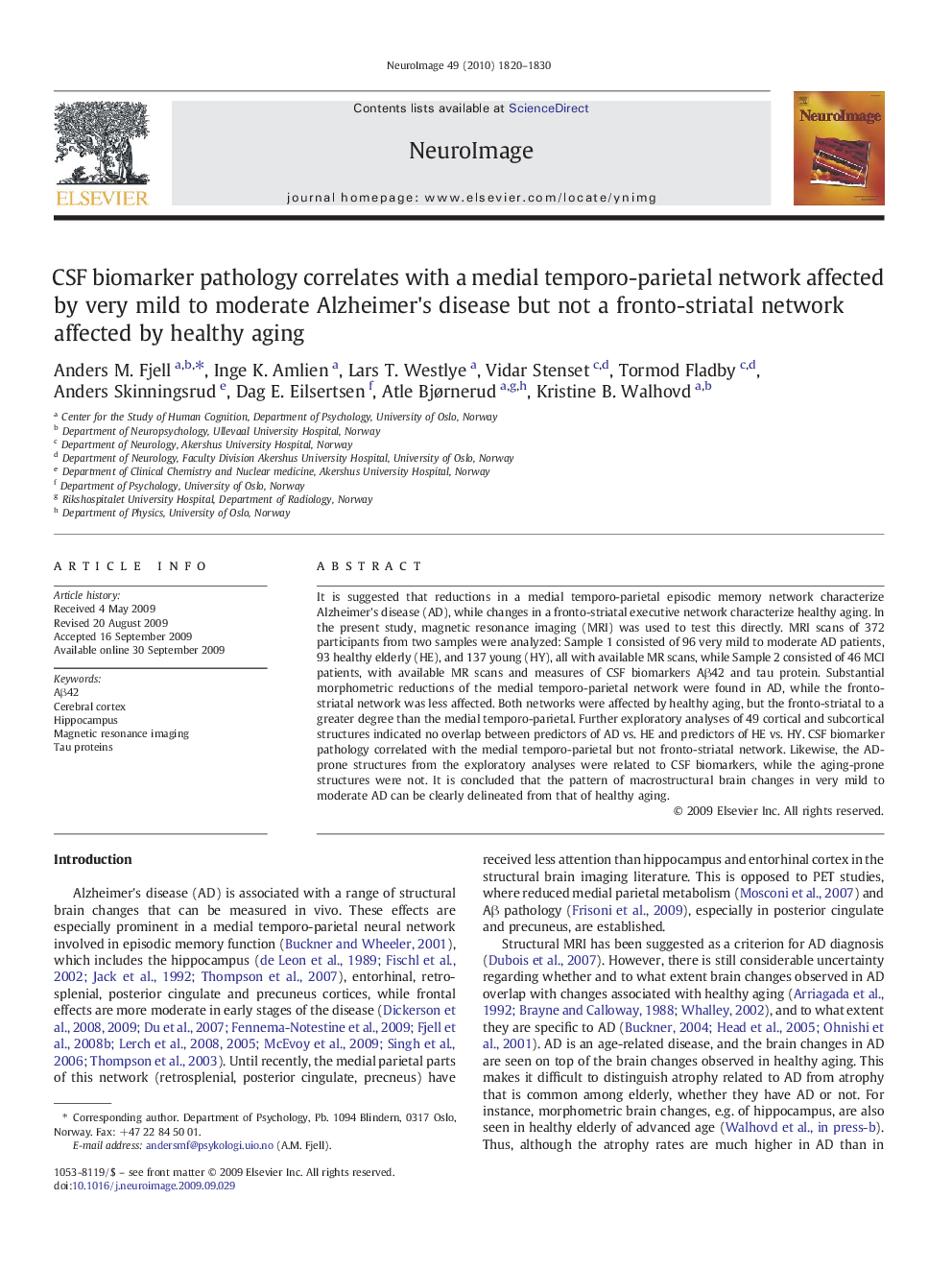| Article ID | Journal | Published Year | Pages | File Type |
|---|---|---|---|---|
| 6038067 | NeuroImage | 2010 | 11 Pages |
Abstract
It is suggested that reductions in a medial temporo-parietal episodic memory network characterize Alzheimer's disease (AD), while changes in a fronto-striatal executive network characterize healthy aging. In the present study, magnetic resonance imaging (MRI) was used to test this directly. MRI scans of 372 participants from two samples were analyzed: Sample 1 consisted of 96 very mild to moderate AD patients, 93 healthy elderly (HE), and 137 young (HY), all with available MR scans, while Sample 2 consisted of 46 MCI patients, with available MR scans and measures of CSF biomarkers Aβ42 and tau protein. Substantial morphometric reductions of the medial temporo-parietal network were found in AD, while the fronto-striatal network was less affected. Both networks were affected by healthy aging, but the fronto-striatal to a greater degree than the medial temporo-parietal. Further exploratory analyses of 49 cortical and subcortical structures indicated no overlap between predictors of AD vs. HE and predictors of HE vs. HY. CSF biomarker pathology correlated with the medial temporo-parietal but not fronto-striatal network. Likewise, the AD-prone structures from the exploratory analyses were related to CSF biomarkers, while the aging-prone structures were not. It is concluded that the pattern of macrostructural brain changes in very mild to moderate AD can be clearly delineated from that of healthy aging.
Related Topics
Life Sciences
Neuroscience
Cognitive Neuroscience
Authors
Anders M. Fjell, Inge K. Amlien, Lars T. Westlye, Vidar Stenset, Tormod Fladby, Anders Skinningsrud, Dag E. Eilsertsen, Atle Bjørnerud, Kristine B. Walhovd,
